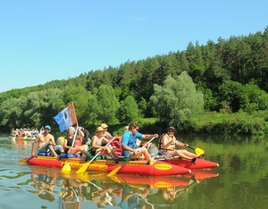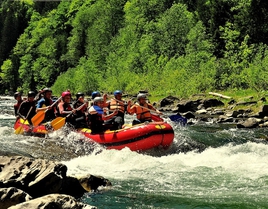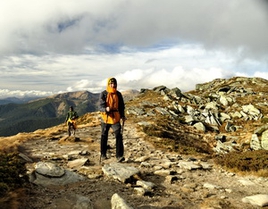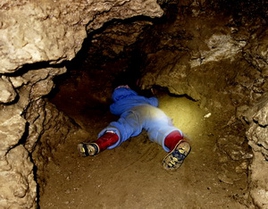The Dniester river
General information
From the slopes of the Carpathians to the Black Sea the most picturesque river of Ukraine – Dniester carries its water from west to south-east as a blue ribbon with the length of 1362 km. It begins with a small stream on the slopes of the Mount Rozluch, which is in Beskydy above the village of Sereda, in Lviv region, at a height of 800 m

At the upper stream the Dniester has a mountain character of the flow rate of 2 - 4 m/s, and from Galych it is flowing moderately.
From the village of Nyzhniv, which is the traditional place for rafting start, up to the river Zbruch Dniester is running down canyonlike valley.
The canyon length is 250 km. The depth is 130...160 m, the width is 0.5...3 km.
The width of the riverbed - 100...300 m, the depth is 1.5…3.5 m.
The length of the river at the section Nyzhniv - Zalishchyky is 135 km.
Dniester carries its waters down Lviv and Ivano-Frankivsk region, crosses the southwestern edge of Podilska Upland, separates Ivano-Frankivsk and Chernivtsi region from Ternopil and Khmelnytsky regions. It flows along the border of Moldova and Ukraine, 328 kilometers of the territory of the latter.
About 400 rivers flow into the Dniester, the basin area is 72.1 thousands km2.
Find out more about the Dniester river:
History of the Dniester as a waterway
Formation script of the Dniester riverBrief information
Dniester as a transport artery in 50 years of the nineteenth century
Climate of the Dniester canyon
The climate on the interval of the Dniester canyon is soft and warm. The average January temperature is - 50С, July +190С. On the lands along the Dniester River in Borshchiv and Zalishchyky districts the spring comes two weeks earlier than in other districts. "The Dniester subtropics" create the best conditions for recreation on the Dniester river.
Find out more about climate on the Dniester:
Man at nature
 |
 |
 |
Flora and fauna of the Dniester
Main forest species of the Dniester Canyon - oak, rock oak and forest beech (tract Vadova). Steep abrupt slopes of the Dniester and its tributaries are covered with undersized shrub forests of sessile oak, steppe cherry, elm, horn-beech, turf, hips, sheep berry; rock-steppe flora is common on the walls, meadow plants are on the high unploughed river terraces, represented by formations of fescue furrow, beard grass normal, cinquefoil sandy, thyme Podilskyi and clothed, samosyl panyanskyi and others.
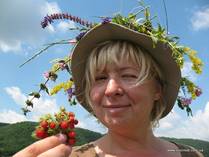 |
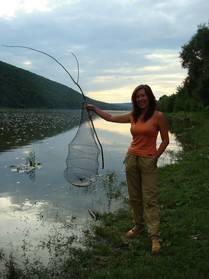 |
 |
The fauna of the Dniester canyon varies in diversity and is richer than in the surrounding area. Here are found deer, boar, badgers, rabbits, squirrels, even lynxes, deer, elks drop in. You can also find marsh tortoise, lizard green, snakes and vipers. Innumerable is the kingdom of feathery. Gray herons chose a place near the Dniester - rare avifauna representatives of our region.
The Dniester is a great place for fishermen! Pikeperch, catfish, wild carp, pike, barbel, chub, sneep, vimba, roach, rudd, tench, bleak, carp, perch, bream, and others inhabit the Dniester. A large number of fish coming to spawn accumulates in the spring in the area of the coastline in some places that are rich in plankton. About 40 species are found in the Dniester.
Find out more about natural resources of the Dniester:
Untouchable Fund of Nature
At the Dniester banks
Places of interest near the Dniester
Almost a third of all the castles and castle structures that are in Ukraine, are concentrated in the Ternopil region. Ternopil region is quite rich in natural attractions, including waterfalls, grottoes, rocks of the Devonian period, caves (Vidlyudnyk (hermit) cave). During the rafting on the river Dniester you will see the ruins of the Biyenevskyi castle in the village of Rakovets, a church and tower of the castle near the village Nyrkiv, a cave-temple of pre-Christian times in the village of Monastyrok, remains of Trypillian housing and many other achievements of the centuries.
More briefly about some noteworthy places.
 |
 |
 |
The Dzhuryn waterfall is considered to be the largest waterfall in Ukraine. It is 16 m tall. It is hard to believe that people participated in its creation: tatars during the siege of the castle turned the river into another direction. Times passed - and now we can enjoy the beauty and take healing water treatments. Dzhurinskiy waterfall itself is a cascade, so there are many possibilities for thrill-seekers, fans of Jacuzzi, experimentors. Dzhurinskiy waterfall charms and cures
The Dniester canyon. The most original within Ukraine is a system of canyons of Transdniester, which forms the Dniester, along with its tributaries. They can be grouped under the name of the Grand Canyon of the Dniester. The steep, sometimes vertical slopes of the canyons rise above the Dniester at 150 - 180 meters and more, form a relief that resembles a mountain. The canyon begins near the village Nyzhniv of Ivano-Frankivsk region as a unique outcrop of Jurassic period, and ends at the mouth of Zbruch as super unique Silurian outcrops in Trubchyn. The Dniester Canyon, according to the decision of the nationwide online poll, announced on August 26, 2008, is recognized as one of the 7 natural wonders of Ukraine. The canyons edge is the Middle Transdniester.
Rusyliv cascade of waterfalls at 20 km distance from Beremyany flows down deep crevices and is recognized as the biggest waterfall stream of Ukraine (14 waterfalls, the largest of which reaches 12 m). Streams unite and overcome the steep red outshots of the Devonian sandstones and flow into the Strip.
The village of Stinka is located on the “wall” over the Dniester. There is an old cult cave below the village at an abrupt bank. Early Christian cave church at the beginning of I - II century A.D. with pagan and Christian symbols.
Palace of Count Casimir Felix Baden in the town of Koropets built in 1883 in the classic-syncretic style with magnificent baroque stucco heraldic attributes.
Tours programs include visits to ancient towns of Ternopil region. In particular, Chortkiv, Terebovlya, urban like town of Mykulyntsi.
Remains of the castle still are kept in Chortkiv (beginning of XVI century), Town Hall with the clock tower (1924), a house of a former city council (1930). Here are revealed archaeological relics of the Middle Stone Age, Trypillya culture, ancient Slavic settlements. There are many temples in the town, among them: a wooden church of the Assumption (1583), Dominican klyashtor (1610).
In Terebovlya one should see the ruins of the castle (1631), defensive Church of St. Nicholas (XVI cent.), Church and monastery of Carmelites, town hall and more.
Find out more about the places that are worth visiting, on the Dniester:
Touristic pearls of Ternopil region
Something about already known Mykulyntsi and still mysterious Mikulin
Ternopil region – a country of fortresses
Ternopil region has something unique with no analogues in the world…
Lytyachiv oaks
